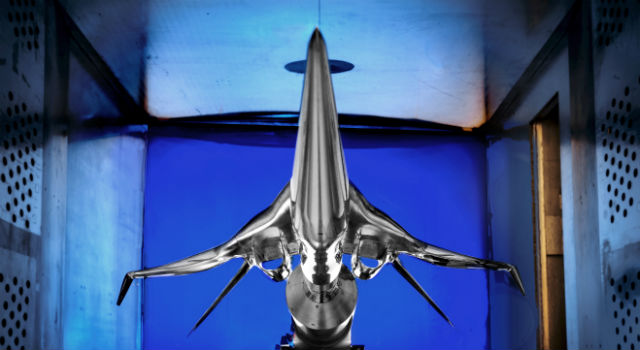Eight newly-launched studies announced by NASA on 3 June will continue the agency’s long-running effort to validate the technology for a new generation of passenger-carrying supersonic aircraft.
The focus of the studies launched by NASA’s commercial supersonic technology project ranges widely.
NASA awarded Rockwell Collins $698,000 for a two-year study on a “sonic boom display” that shows pilots how the noise created by the aircraft’s speed is being perceived on the ground. In perhaps a related study, Honeywell will evaluate a pilot interface for mitigating sonic boom noise under a $686,000, two-year study.
The University of California-Irvine will study quiet nozzle concepts for a “low-boom aircraft” with a $575,000 two-year award.

Wyle Laboratories will study how turbulence influences shaped sonic booms with a $1.2 million, three-year study.
NASA selected the Massachusetts Institute of Technology for a $1.2 million, four-year study to examine how emissions from a supersonic aircraft could impact the environment in the stratosphere.
The US prohibits supersonic flight by commercial aircraft because of the sonic boom, while the European Union bans aircraft that create a sonic boom that can be perceived on the ground.
NASA officials have long believed the key to revitalising commercial supersonic travel is developing new aircraft that are shaped to muffle the booms created by exceeding the speed of sound. By extending the nose to a sharply tapered point, NASA researchers have found that the sound created by a supersonic aircraft can be reduced significantly.
But the next challenge is proving such “low-boom” technology works on a representative aircraft, such as an X-Plane. So far, NASA has not revealed plans to fund an acoustic noise survey, but agency officials are clearly taking steps to prepare.

The recent batch of studies include two awards for reducing the risk on two key aspects of an X-Plane devoted to an acoustic noise survey.
A one-year $337,000 contract awarded to Applied Physical Sciences will evaluate “waveforms and sonic boom perception and response”. Secondly, NASA awarded a $393,000, one-year study to Fidell Associates for risk reduction of a “low-boom flight demonstration vehicle”.
After one year, NASA will choose one of those two contractors for a follow-on study worth $450,000 over two years.
Source: FlightGlobal.com
















